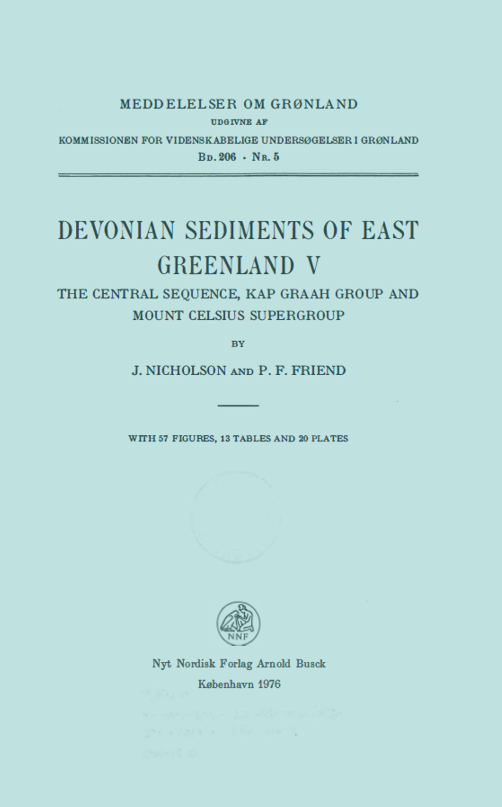Devonian Sediments of East Greenland V. The Central Sequences, Kap Graah Group and Mount Celsius Supergroup.
Résumé
The first phase of deposition of the Upper Devonian Kap Graah Group consisted mainly of braided river sands, with minor lacustrine and probable aeolian sediments. These deposits are broadly similar to those of the underlying Kap Kolthoff Supergroup, and the boundary is generally conformable, rather arbitrary and probably diachronous. In the centre of the outcrop, the first phase accumulated over 1000 m of sediments and the palaeoccurrents flowed southwards. There is a small amount of evidence for a margin of this basin some way to the west, and much stronger evidence for an eastern margin traversing Gauss Halvø and continuing southwards. In various parts of this eastern marginal zone 1) the lower Kap Graah Group rests unconformably on folded Kap Kolthoff Supergroup, 2) major volcanism occurred, and 3) coarse sediment was derived from the east.
The second phase of deposition of the Kap Graah Group accumulated up to 900 m of sediment which was marked by a change to northwards of the basinal palaeoccurrent direction. Deposition extended farther eastwards overlying folded sediments that range from Vilddal Supergroup to lower Kap Graah Group. This reflects an eastern migration of the eastern margin of the basin, but palaeocurrents and coarsening both show that material was still being derived from an eastern source area. Vertebrate fossils are more abundant in this second phase of the Group. The Remigolepis Group of the Mount Celsius Supergroup reaches a thickness of about 800 m and follows conformably on the upper Kap Graah Group. Siltstones are the dominant lithology, and appear to have accumulated in low gradient rivers, which both preceded, and followed, a distinctive phase of dominantly lacustrine sedimentation. The low-gradient rivers contained a diverse assemblage of fish and amphibians.
The final episode reflected in the succession is a return to more coarse-grained sandstone accumulation. This formed the Grönlandaspis Group, which may be partly Lower Carboniferous in age, and is up to 600 m thick.

Téléchargements
Publiée
Comment citer
Numéro
Rubrique
Licence
Coypyright by the authors and the Commision for Scientific Research in Greenland. No parts of the publications may be reproduced without the consent of the copyright holders.

